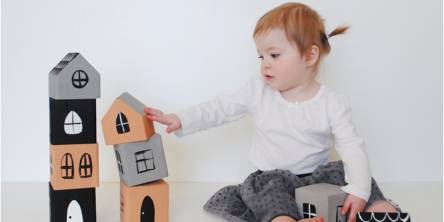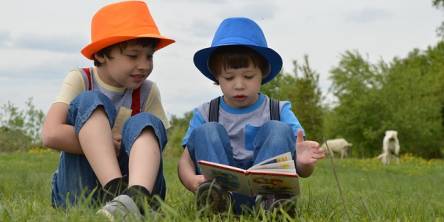5 Rules To Ensure Kids Stay Safe While Playing Games Online

Today’s kids are digital natives – they are growing up in a time where ipads, smartphones, and gaming consoles are as commonplace as traditional toys. But just because they may be more knowledgeable in navigating the latest devices doesn’t mean they’re wiser. As a parent, your guidance is still utterly crucial in keeping them safe, even – and especially – when they are engaged in a seemingly innocent activity such as playing online games.
In fact, online gaming is rife with risks that your young one could easily fall into. Internet security firm Kaspersky conducted a study of 11- to 16-year-olds and found a worrying statistic: 20 percent of the children they interviewed admitted that they trusted gaming platforms so much that they would not have a problem with meeting their gaming contacts in real life.
In addition, 38 percent of the child respondents revealed they had encountered people pretending to be someone else while gaming and 23 percent had been asked suspicious questions. These numbers are enough to make any parent feel anxious about letting their child anywhere near a device that allows them to play games. But it is still possible to let kids have their fun while staying safe. As soon as your child starts playing games online, set down these rules and enforce them consistently.
1. Educate Them On The Dangers
Education is key to online safety, so make sure that you and your child are aware of the possible dangers one may encounter in online gaming. These include cyber-bullying, harassment, stalking, scams, viruses and malware, exposure to inappropriate content, and vulnerability to criminals such as hackers and pedophiles. First understand how these dangers can occur and how to avoid them, then discuss the dangers in an appropriate way with your child.
Further, stay as updated as you can. The internet changes all the time, which means there could be new ways for online gamers to be at risk. Software chief executive François Amigorena cites an example: “A school figure from the library informed my children that all .org domains are safe. Which was once the case as it was created for non-profits, but now they can be registered by anyone; just put any rude word in between ‘www.’ and ‘.org’.”
2. Be Careful With In-Game Chat & Messaging
A major feature of modern gaming platforms is allowing players to connect with others around the world. For example, platforms like “Minecraft” and “Roblox” serve as ‘sandbox’ worlds where each player can build virtual things while socializing with other players online. Meanwhile, videogames like “NBA 2k17” and “Portal 2” have a multiplayer mode to form teams with other active players. To allow this, many apps and gaming consoles have communication features such as instant messaging, voice calls, and video chats. In other words, they allow kids to talk to anyone in the world.
Here is where you should set limits for your children. Remind them not to accept contact requests or gifts from strangers, and to never send any private material to anyone. Also let them know that when someone says anything that makes them feel uncomfortable, they can come to you or even go ahead and block that person right away. Also, do random checks of their chat history, or another option is you simply have a rule where they are not allowed to use the chat option in any game they play.
3. Keep Kids Within View While They Are Playing
A straightforward solution to ease your anxieties on your kids’ online gaming is to get them to play within your view. Security experts recommend setting up kids’ consoles in a communal area such as the living room, instead of in the privacy of their bedrooms. That way, you can see and hear the nuances of your children’s gaming behavior as well as that of the people they play with.
4. Ensure Parental Controls Are Switched On
Regardless of whether your child plays on a console such as Xbox or PlayStation, or on a personal computer, or even on a mobile device such as an iPad or iPhone, there is almost always a way to apply parental controls. Most consoles and gaming computers have built-in security settings, so take the time to tinker with these. Popular kids games like Roblox and others also have security settings which you need to get familiar with.
Further, you can install trusted third-party apps and software for full-featured parental control programs. Parenting editor Caroline Knorr names NetNanny and Qustodio as some of the programs that lets you block websites and online apps, enforce screen-time limits, and monitor your child’s online activity.
You can discuss these parental control methods with your kids so that they don’t feel like you are being a draconian dictator towards them. Let them understand why these settings are needed, and that they can talk to you if they feel that these should be adjusted.
5. Constantly Be Communicating
Open communication between you and your child is one of the most vital elements of staying safe. Your child should be able to tell you right away when someone or something feels off during an online game. In addition, stay in-the-know about your child’s online contacts – a simple “How is your online team or clan doing?” can start a conversation about the people your child is interacting with.
Most of all, make sure your young one feel comfortable talking to you, without you automatically dismissing their online games as evil. Children often need help in articulating their sentiments or explaining an event, so encourage them to keep talking to you. The important thing is that they see you as a trustworthy and nonjudgmental adult, while also being someone who keeps them safe.
Similar Articles
Setting up a playground in a school or community can be an incredibly exciting endeavor. You’re giving local kids a place to exercise, enjoy themselves, and form lifelong bonds with new friends.
Caring for a child with medical needs can be a challenging and emotional journey. When traditional hospital care isn't the ideal long-term solution, children's home health can provide a valuable alternative.
Spark creativity & development with ride-on fire trucks! These fun toys boost cognitive, motor, and social skills while teaching safety & responsibility.
When the young person you care for reports that they struggles with mental health problems, it may trigger you to think about a resolution. It is not an easy issue to deal with, and you might even remain puzzled and not know what steps to take.
The first visit to the dentist can be a daunting experience for both kids and parents. Preparing children for this milestone is crucial to ensure a positive experience that sets the tone for their dental health journey. This article explores effective strategies to ease anxiety, introduce dental concepts in a fun way, and create excitement around oral care, making that first appointment a breeze.
The bookshelf in a child's room has the potential to inspire an appreciation for reading, but it can also quickly become a hotbed of chaos if not properly managed. It is crucial to have a strategy for organizing and keeping your child's books to make the most of their collection.
It's an excellent method to encourage kids to use their imaginations and create things from simple materials, and they'll have a blast putting their spin on what they produce
Do you have a child and you want to give his room a special character with which he feels comfortable? If you are about to make a room for your child and you still have no idea how to decorate his room, or how to make him feel perfect
Giving a book to a baby is a perfect gift idea whatever the occasion, whether it is for a birthday or Christmas, etc. Nowadays, a book can be personalized with the name of the child and according to the needs of each individual









